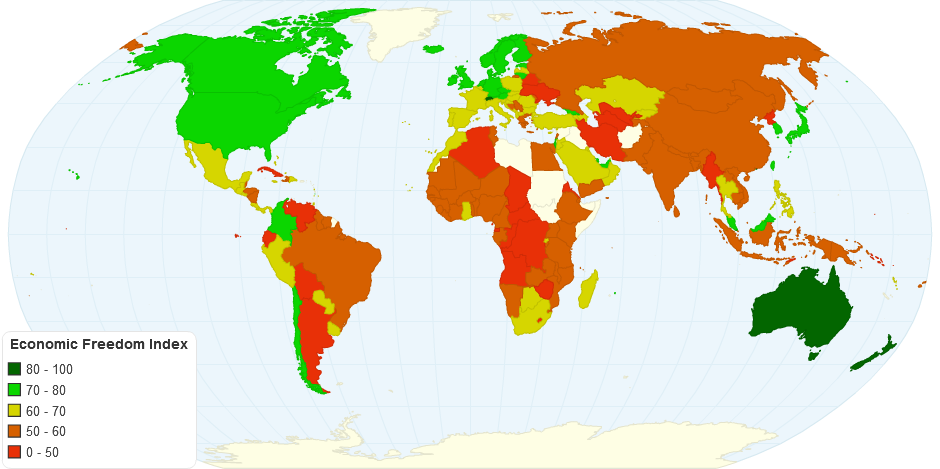This chart shows the Economic Freedom Index for the year 2015 by Country.
The Index of Economic Freedom is an annual index and ranking created by The Heritage Foundation and The Wall Street Journal in 1995 to measure the degree of economic freedom in the world's nations. The creators of the index took an approach similar to Adam Smith's in The Wealth of Nations, that "basic institutions that protect the liberty of individuals to pursue their own economic interests result in greater prosperity for the larger society".
The Index's 2008 definition of economic freedom is "The highest form of economic freedom provides an absolute right of property ownership, fully realized freedoms of movement for labor, capital, and goods, and an absolute absence of coercion or constraint of economic liberty beyond the extent necessary for citizens to protect and maintain liberty itself."
The index scores nations on 10 broad factors of economic freedom using statistics from organizations like the World Bank, the International Monetary Fund and the Economist Intelligence Unit:
- Business Freedom
- Trade Freedom
- Monetary Freedom
- Government Size/Spending
- Fiscal Freedom
- Property Rights
- Investment Freedom
- Financial Freedom
- Freedom from Corruption
- Labor Freedom
The 10 factors are averaged equally into a total score. Each one of the 10 freedoms is graded using a scale from 0 to 100, where 100 represents the maximum freedom. A score of 100 signifies an economic environment or set of policies that is most conducive to economic freedom. The methodology has shifted and changed as new data and measurements have become available, especially in the area of Labor freedom, which was given its own indicator spot in 2007.
10 years ago

